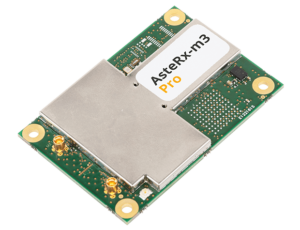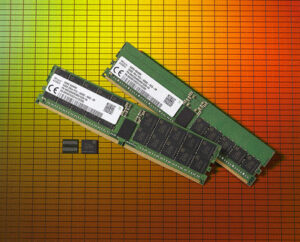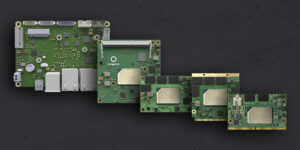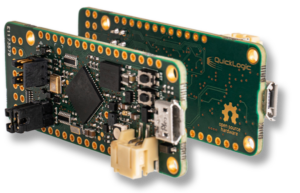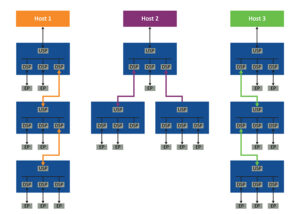Septentrio announced an expansion of its GPS/GNSS OEM portfolio with the AsteRx-m3 product family. AsteRx-m3 receivers target various use cases and offer flexibility and affordability with no compromises of performance. They feature the lowest power consumption on the market, allowing longer operation times. Their new easy-to-integrate design ensures short set-up times and faster time-to-market. All […]
Machine learning
2.3 Mp CMOS image sensor delivers image clarity at 120 fps
ON Semiconductor has introduced the AR0234CS 2.3 Mp CMOS image sensor with global shutter technology. The high-performance sensor is designed for a variety of applications including machine vision cameras, AR/VR/MR headsets, autonomous mobile robots (AMRs), and barcode readers. The AR0234CS captures 1080p video and single frames operating up to 120 frames per second (fps). With […]
World’s First 16-Gb DDR5 DRAM supports transfer rates up to 5,600 Mbps
SK hynix Inc. announced to launch the world’s first DDR5 DRAM. It is a high-speed and high-density product optimized for Big Data, Artificial Intelligence (AI), and machine learning (ML) as a next generation standard of DRAM. Since SK hynix announced the development of the World’s First 16 Gigabit (Gb) DDR5 DRAM in November 2018, the […]
Xilinx snags LEAP Gold in Embedded Computing category
The winners of the 2020 LEAP Awards (Leadership in Engineering Achievement Program) were announced last week in a digital ceremony, with products across 12 categories, including embedded computing, power electronics, and test and measurement. Critical to LEAP’s success is the involvement of the engineering community. No one at WTWH Media selected the winners. Instead, our […]
Software manages DRAM, persistent memory as software-defined memory service
MemVerge, the pioneers of Big Memory software, announced general availability of Memory Machine software. Used with Intel Optane persistent memory, Memory Machine fundamentally changes in-memory computing infrastructure. IT organizations depend on high-performance DRAM while coveting lower-cost and persistent memory. The Memory Machine engineering team answered with the industry’s first software-defined pools of DRAM and persistent […]
SBCs, modules incorporate new atom x6000E series processors
congatec, a leading vendor of embedded computing technology welcomes the launch of Intel’s new low-power processor generation on five embedded form factors. To be made available on SMARC, Qseven, COM Express Compact, and Mini Computer-on-Modules as well as Pico-ITX Single Board Computers (SBCs), the different Intel Atom x6000E Series processors, Intel Celeron and Pentium N & […]
AI development tools now packaged with ARM Core development board
SensiML Corporation announced that its SensiML Analytics Toolkit is now integrated with the QuickLogic QuickFeather Development Kit, featuring a small form factor board which enables the next generation of low-power, machine learning IoT devices. The QuickFeather kit is based on a 100% open source development environment and includes QuickLogic’s EOS S3 low-power SoC with an […]
Exploiting the full potential of GPUDirect Storage with PCIe fabrics
By Vincent Haché, Technical Staff, FW Engineering, Microchip Technology Big data analytics and AI model training present huge challenges for processing with GPUs. Their datasets can be hundreds of terabytes requiring millions of file access on an equal number of files. As the pace of this data onslaught continues, it has become obvious that conventional […]
AI toolkit works with MCU open-source neural network inference engine
SensiML Corporation announced that its SensiML Analytics Toolkit now seamlessly integrates with Google’s TensorFlow Lite for Microcontrollers. Developers working with Google’s TensorFlow Lite for Microcontrollers open source neural network inference engine now have the option to leverage SensiML’s powerful automated data labeling and preprocessing capabilities to reduce dataset errors, build more efficient edge models, and do […]
How “green” is your Artificial Intelligence?
Artificial intelligence (AI) systems face a set of conflicting goals: being accurate (consuming large amounts of computational power and electrical power) and being accessible (being lower in cost, less computationally intensive, and less power-hungry). Unfortunately, many of today’s AI implementations are environmentally unsustainable. Improvements in AI energy efficiency will be driven by several factors, including […]
